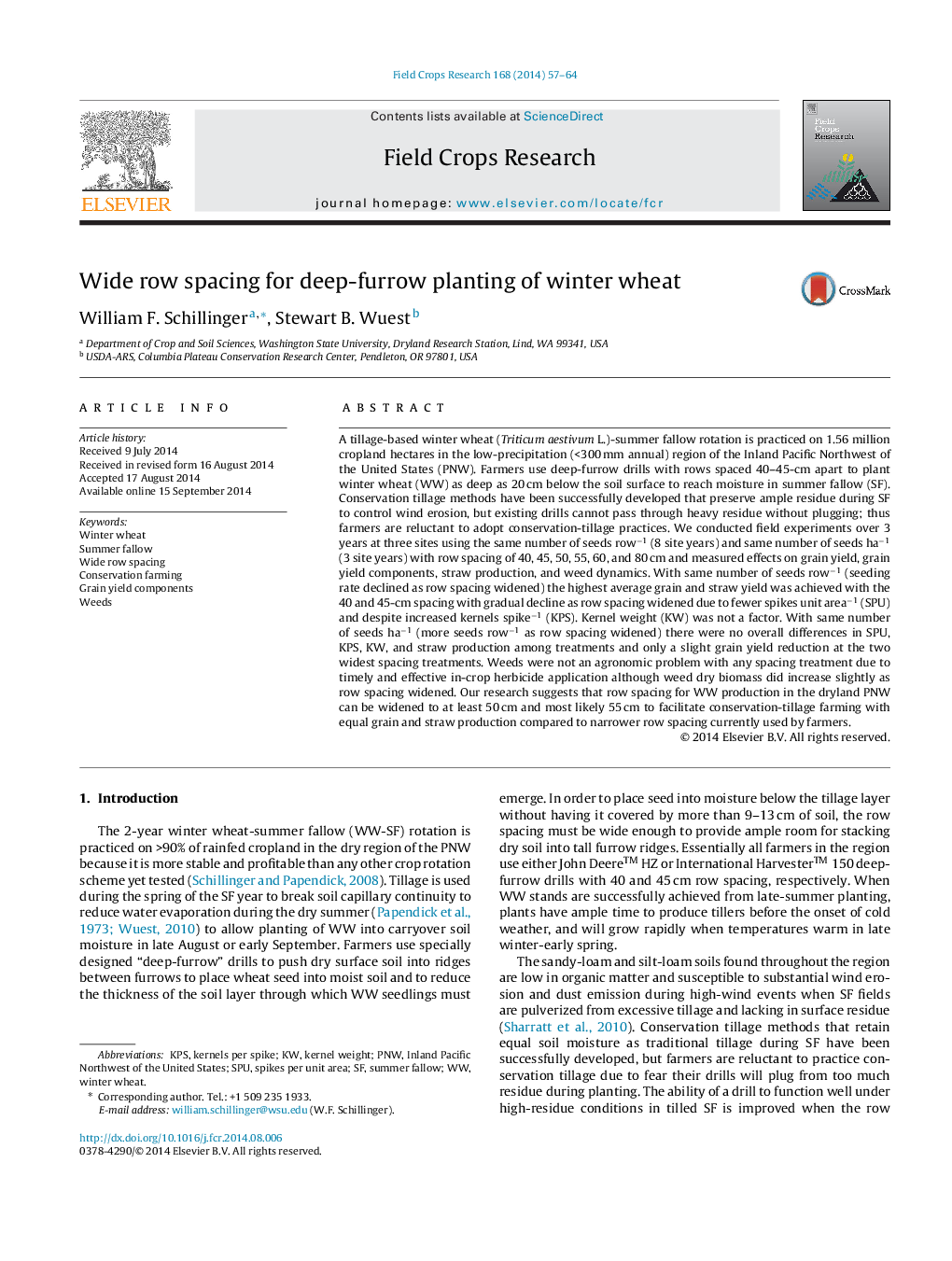| کد مقاله | کد نشریه | سال انتشار | مقاله انگلیسی | نسخه تمام متن |
|---|---|---|---|---|
| 4509970 | 1624695 | 2014 | 8 صفحه PDF | دانلود رایگان |
• Wheat farmers in the dry winter wheat-summer fallow region of the PNW use deep-furrow drills with 40–45-cm spacing between rows.
• Farmers are reluctant to adopt conservation-tillage practices because their existing deep-furrow drills cannot pass through heavy residue without plugging.
• Deep-furrow drills with row spacing wider than 45 cm would facilitate residue clearance during planting.
• We conducted field experiments for 3 years at three sites to compare row spacing widths of 40, 45, 50, 55, 60, and 80 cm.
• Row spacing can be widened to at least 50 cm with equal grain yield and straw production compared to narrower row spacing.
A tillage-based winter wheat (Triticum aestivum L.)-summer fallow rotation is practiced on 1.56 million cropland hectares in the low-precipitation (<300 mm annual) region of the Inland Pacific Northwest of the United States (PNW). Farmers use deep-furrow drills with rows spaced 40–45-cm apart to plant winter wheat (WW) as deep as 20 cm below the soil surface to reach moisture in summer fallow (SF). Conservation tillage methods have been successfully developed that preserve ample residue during SF to control wind erosion, but existing drills cannot pass through heavy residue without plugging; thus farmers are reluctant to adopt conservation-tillage practices. We conducted field experiments over 3 years at three sites using the same number of seeds row−1 (8 site years) and same number of seeds ha−1 (3 site years) with row spacing of 40, 45, 50, 55, 60, and 80 cm and measured effects on grain yield, grain yield components, straw production, and weed dynamics. With same number of seeds row−1 (seeding rate declined as row spacing widened) the highest average grain and straw yield was achieved with the 40 and 45-cm spacing with gradual decline as row spacing widened due to fewer spikes unit area−1 (SPU) and despite increased kernels spike−1 (KPS). Kernel weight (KW) was not a factor. With same number of seeds ha−1 (more seeds row−1 as row spacing widened) there were no overall differences in SPU, KPS, KW, and straw production among treatments and only a slight grain yield reduction at the two widest spacing treatments. Weeds were not an agronomic problem with any spacing treatment due to timely and effective in-crop herbicide application although weed dry biomass did increase slightly as row spacing widened. Our research suggests that row spacing for WW production in the dryland PNW can be widened to at least 50 cm and most likely 55 cm to facilitate conservation-tillage farming with equal grain and straw production compared to narrower row spacing currently used by farmers.
Journal: Field Crops Research - Volume 168, November 2014, Pages 57–64
